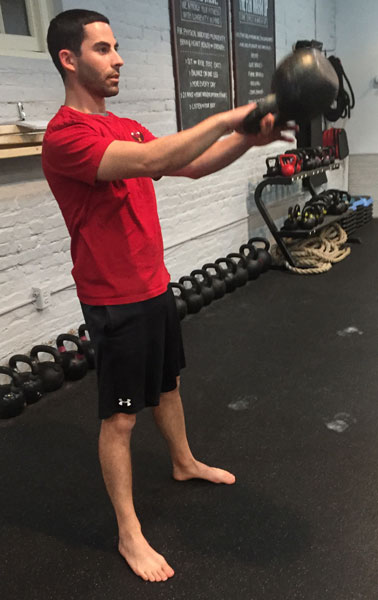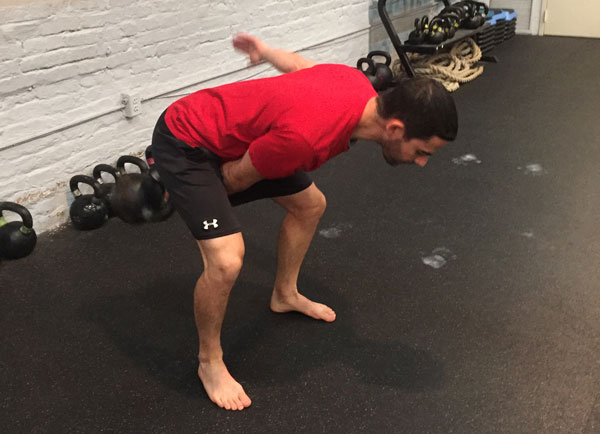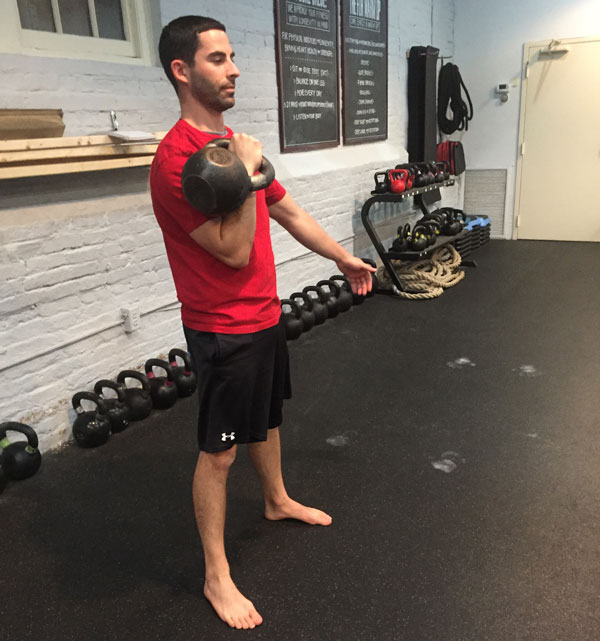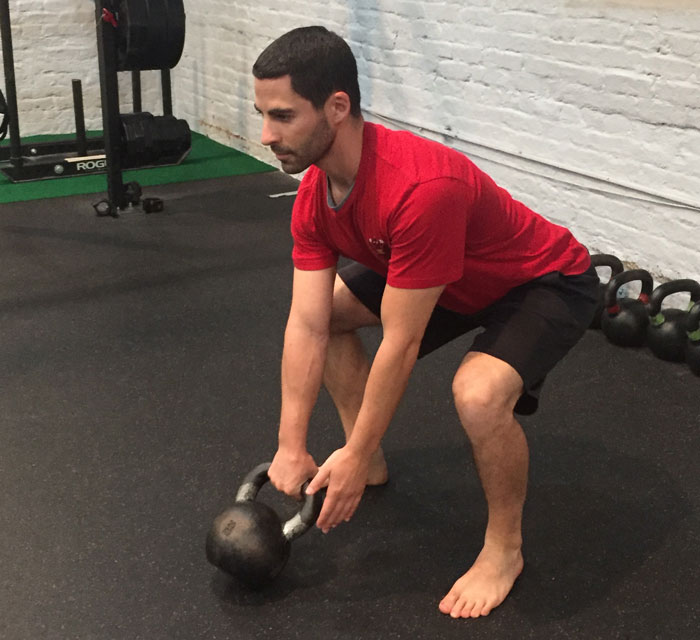I really love teaching others how to train with kettlebells; it’s what I’ve become most passionate about as a fitness professional. Whether online or in-person, I get a deep sense of satisfaction when a client learns a new movement or refines their technique.
 While it can be exhilarating to learn new kettlebell drills or refine your technique, retaining so much new information—and then applying it to your training can be daunting!
While it can be exhilarating to learn new kettlebell drills or refine your technique, retaining so much new information—and then applying it to your training can be daunting!
My goal with this post is to create a simple connection between all of the RKC ballistic exercises (swings, cleans, snatches) so that you can easily apply the same knowledge and techniques to all of the movements.
First, let’s start with the timing of the breath. Breathing is one of the most important functions of training and life. At the top of the swing, when the glutes and quads contract, a sharp exhalation is performed. This sharp exhalation helps to compress the midsection and direct more power into the kettlebell. Again, it is coordinated with the glutes and quads forcefully contracting.
The timing of the exhalation remains the same when performing a clean and a snatch. Although the kettlebell will still be traveling after the exhalation has occurred in both the clean and snatch, it still happens when the glutes and quads contract. The exhale acts almost like a rocket booster, propelling the kettlebell into the rack or overhead position with relative ease. If your exhalation occurs when the clean or snatch is in the finished position, then you’ve lost the benefit of the “rocket booster”.
The backswing is another important part of all ballistic movements—and it should be exactly the same from technique to technique. You should be able to smoothly transition from one movement to another without changing your backswing.

Focus on these backswing concepts/tips for one-arm swings, cleans and snatches:
- The handle of the kettlebell passes above your knees
- Your forearm connects high up on your inner thigh
- Your upper arm connects to your ribcage
- Your hips flex to a greater degree than your knees
- There is a slight internal rotation of the thumb
- This is where you inhale
- Spine is neutral

I hope these tips have given you some good “food for thought” for your training. If you experience an “aha” moment or were able to improve a technique, then drop me a line and let me know what you experienced.
Stay Strong,
Ryan Jankowitz, RKC-II
****
Ryan Jankowitz, RKC-II Instructor, CK-FMS, is a life-long athlete who can’t imagine sitting behind a desk. He enjoys sharing his passion for fitness and spreading the RKC knowledge. Ryan provides online personal training for busy people who want to improve their health and kettlebell training for fitness professionals who want to refine their technique and/or train for a certification. He is available for private kettlebell workshops as well. You can reach him at ryan@rjkettlebell.com or through his website rjkettlebell.com. He also works with clients and teaches kettlebell classes at Fitness on the Run in Alexandria, Virginia. If you’re in the area, visit fitnessontherun.net and come swing some bells with Ryan.
